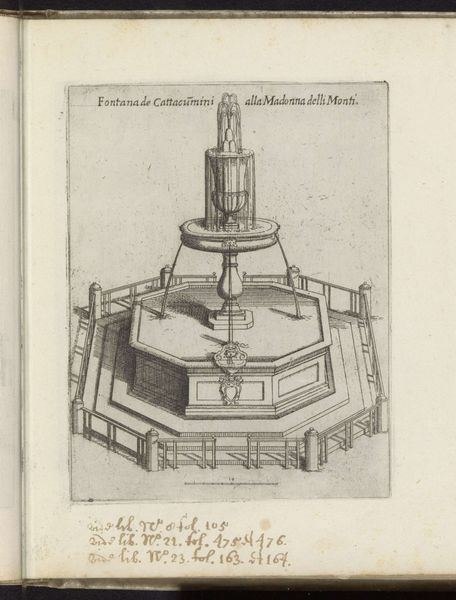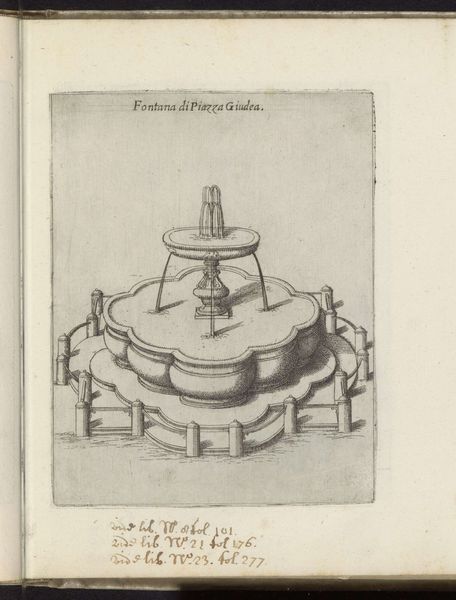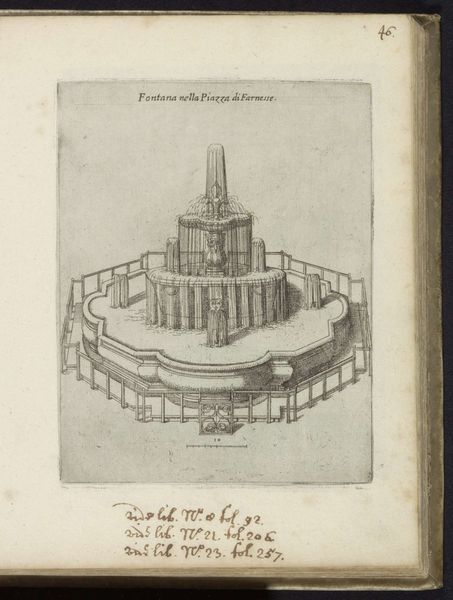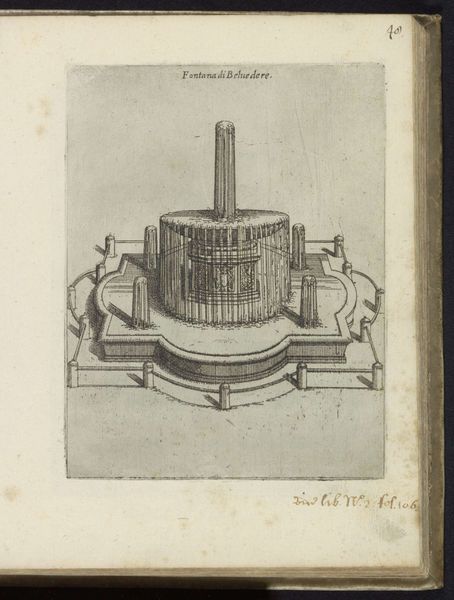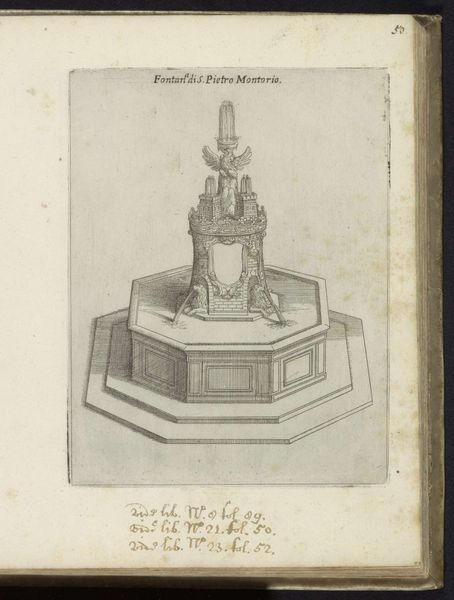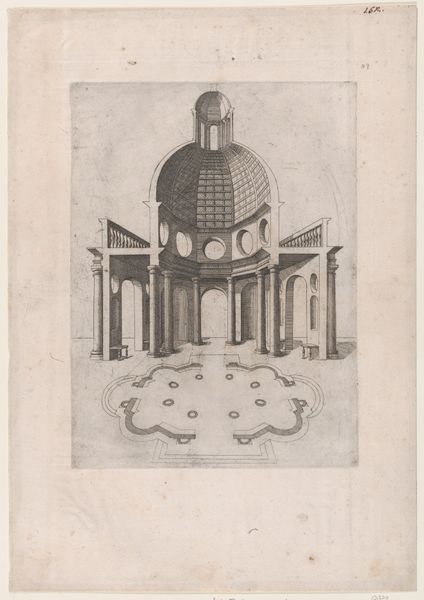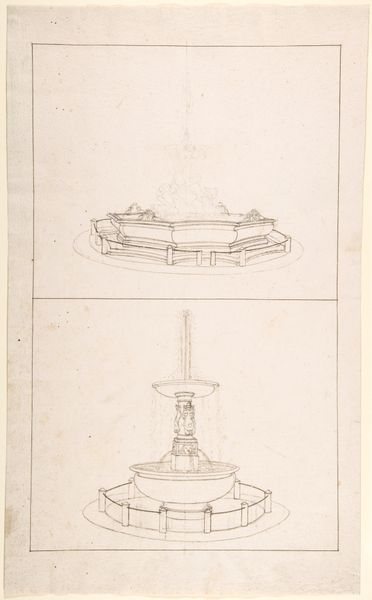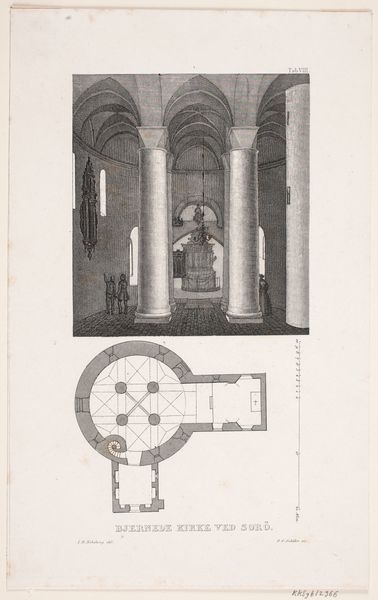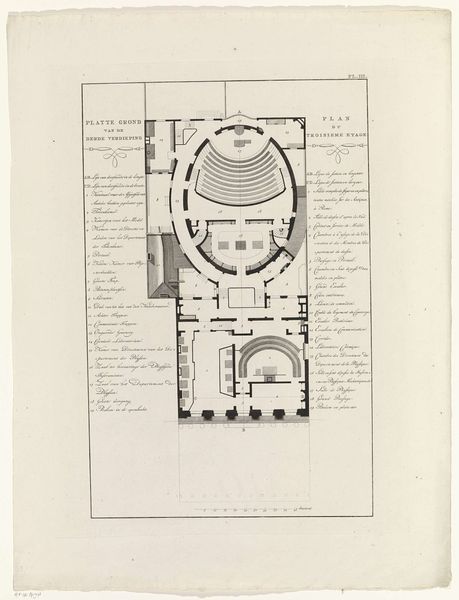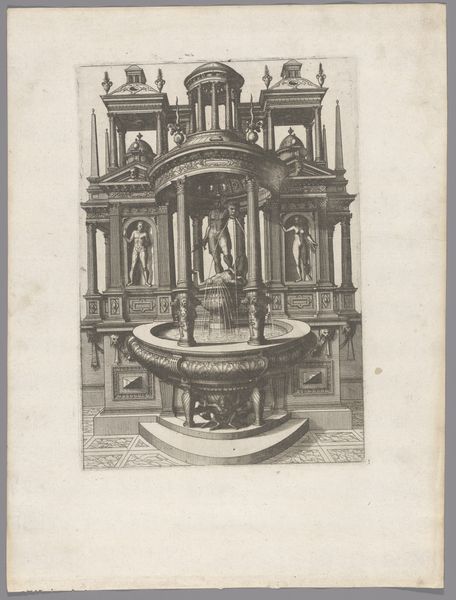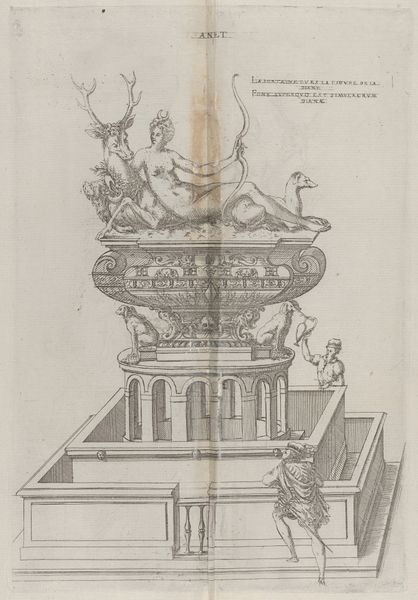
drawing, ink, pen
#
drawing
#
aged paper
#
toned paper
#
baroque
#
mechanical pen drawing
#
pen sketch
#
sketch book
#
personal sketchbook
#
ink
#
geometric
#
pen-ink sketch
#
pen work
#
sketchbook drawing
#
pen
#
cityscape
#
sketchbook art
Dimensions: height 194 mm, width 150 mm
Copyright: Rijks Museum: Open Domain
Curator: Here we have Domenico Parasacchi’s “Fontein bij het Apostolisch Paleis te Vaticaanstad,” or "Fountain at the Apostolic Palace in Vatican City," created in 1637. It's a pen and ink drawing on toned paper. Editor: The first thing that strikes me is the geometric rigidity of the piece. The lines are so precise, and the architectural structure of the fountain itself seems to dominate any sense of natural flow, despite it being a fountain. Curator: Indeed, that rigid geometry speaks to the Baroque fascination with order and control, reflecting a desire to impose a structure on the world. Fountains, historically, are more than just water features; they are symbolic of power, civic pride, and, of course, abundance. Consider what locating this design near the Apostolic Palace says. Editor: Absolutely, and let’s think about the materiality here, the ink on toned paper. This isn’t a fresco for the masses, it's more of a preparatory work, an intimate study. Perhaps a way to communicate design details with artisans involved in constructing such elaborate forms, where standardization, precision, and replicability matter most. Curator: And the visual language itself; it's interesting how the artist chooses to portray this fountain. Notice the level of detail devoted to the geometric elements. It reflects a conscious attempt to distill it, stripping away any of the ephemeral qualities you would expect from running water. Editor: Yes, which leads me back to that emphasis on construction. The means and methods required to bring forth complex projects are paramount in that era, because they symbolize control and resource management. So perhaps the work also implies a mastery of materials and technology that elevates society as a whole. Curator: So, from symbols of power and abundance, to the labor and materials involved, it becomes apparent that such sketches reflect larger shifts of power and value at a fascinating period in history. Editor: Agreed. Thinking about the making allows us a glimpse into the socio-economic conditions in which this fountain, real or imagined, would exist.
Comments
No comments
Be the first to comment and join the conversation on the ultimate creative platform.
